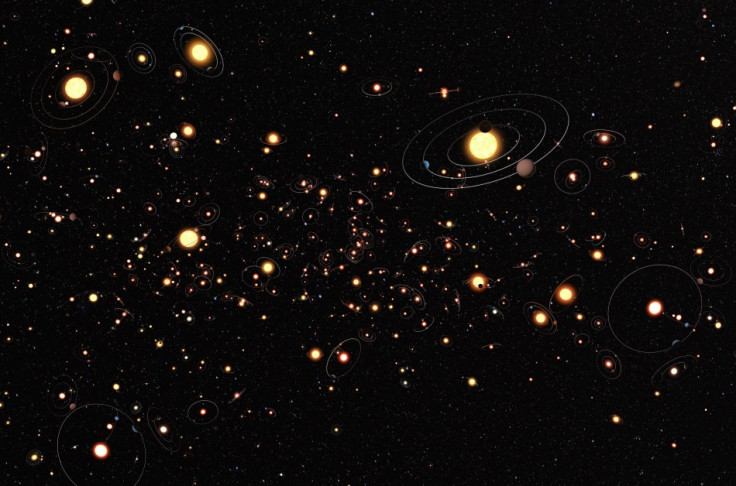'Hundreds of Billions' of Planets in Milky Way Alone

The next time you look up at the night sky, it is worth noting that the spaces in between the visible stars hold billions of planets, astonomers claim.
A study carried out by scientists at the University of St Andrews found that there are at least half as many planets as there are stars in the sky, although smaller planets are seemingly more common.
Lead author Dr Martin Dominik said that although they are not visible to the naked eye, "wherever we look in the sky there are planets".
"We do not know yet where all the planets are, how big or small, dense or fluffy they are, or whether they are home to life or not, but our latest results tell us that while we may not see all the planets, wherever in the sky we look, they are there."
"In the last 15 years we have seen the count of known planets beyond the Solar System rising from none to about 700. We also know that so far we have detected only a tiny fraction of planets out there," he said.
"We expect hundred of billions exist in the Milky Way alone."
It found that massive gas-giant planets, such as Jupiter, were not in abundance, despite seemingly being the easiest to detect. The research of other planets, espeically those possibly capable of holding human life was buoyed by the discovery of the Earth-like Kepler 22-b.
The study, carried out an international team, collated six years' worth of data taken by monitoring stars that undergo a brightening "gravitational microlensing event". Nasa's Kepler mission, which detects planets from dips in the light of stars they transit, also complemented the data.
From the data collected, the theoretical number of planets can be extrapolated and estimated. The skies were observed around the clock using telescopes distributed across the Southern Hemisphere, including Western Chile and Tasmania.
"Probably ever since mankind existed, we have shared our fascination about the myriads of pinpoints of light in the night sky - making us wonder whether they hint of other worlds like ours, or rather unlike ours," Dominink said.
"The first count of other planets did not start until 1995 with the first detection of a planet orbiting a star other than the Sin, and we would subsequently start pointing telescopes to the other stars known to host planets. But now we understand that there is more out there."
© Copyright IBTimes 2024. All rights reserved.





